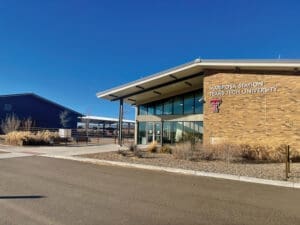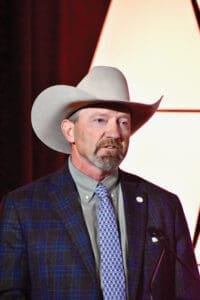By Megan Webb Contributing Editor
In the sprawling expanse of America’s feedlot industry, the presence of immigrant workers is not just a footnote, but a fundamental reality. As we dive into the complexities of the U.S. labor shortage, it becomes evident that the reliance on immigrant labor is not a matter of choice but an economic necessity.
As you know, feedlots rely heavily on manual labor for day-to-day operations. Despite advancements in technology, many tasks, from cattle handling to facility maintenance, remain labor-intensive and require specialized skills. However, a persistent shortage of qualified native workers has left feedlot operators grappling with the challenge of staffing their facilities adequately.
Understanding the Economic Imperatives
Let’s begin by examining the economic realities that underpin the reliance on immigrant workers. The feedlot industry, characterized by labor-intensive tasks and specialized skills, faces persistent challenges in staffing its facilities adequately. Labor scarcity has long been a pressing issue in the agricultural sector, and the feedlot industry is no exception. According to data from the U.S. Department of Agriculture (USDA), the agricultural workforce has undergone significant transformations over the past decades, with hired farmworkers becoming increasingly vital. However, demographic shifts, including an aging workforce and fewer young immigrants entering the sector, present challenges that must be addressed.
The Human Dimension
Behind the statistics and economic analyses lie the stories of individuals – immigrant workers whose dedication and resilience sustain our industry. These individuals, often separated from their homelands and families, embody the human spirit’s boundless capacity for adaptation and perseverance. As stakeholders in the feedlot industry, it’s incumbent upon us to recognize their contributions, advocate for their rights, and provide avenues for their integration and advancement within our workforce.
Practical Solutions
Addressing the multifaceted challenges of labor scarcity and immigration reform demands pragmatic solutions rooted in both policy and industry initiatives. Policymakers must prioritize comprehensive immigration reform that acknowledges the indispensable role of immigrant workers and provide a pathway to legal status and employment stability. Concurrently, feedlot operators and industry stakeholders must invest in workforce development initiatives, offering training, education and support to immigrant workers to enhance their skills and opportunities for advancement.
Harnessing Innovation
In our quest for sustainability and resilience, we must also leverage technological innovation to augment the capabilities of our workforce. Automation and mechanization can complement the efforts of immigrant workers, streamlining operations and enhancing efficiency. By embracing innovation while preserving the human element, we can create a harmonious balance that ensures the long-term viability of the feedlot industry.
Building Collaborative Partnerships
None of these challenges can be addressed in isolation. Collaborative partnerships between policymakers, industry stakeholders, advocacy groups and immigrant communities are essential to effecting meaningful change. By fostering dialogue, sharing best practices and collectively advocating for inclusive policies, we can create an environment where immigrant workers are valued, respected and empowered to contribute to our industry’s success.
Looking Ahead
As we navigate the complexities of labor dynamics and immigration policy, let us remain steadfast in our commitment to inclusivity, fairness and practicality. By recognizing the invaluable contributions of immigrant workers and implementing pragmatic solutions, we can chart a course towards a more sustainable and prosperous future for the feedlot industry and the nation as a whole.
Despite advancements in technology, many tasks, from cattle handling to facility maintenance, remain labor-intensive and require specialized skills.
In conclusion, the presence of immigrant workers in the U.S. feedlot industry is not just a matter of economic necessity – it’s a testament to the resilience, dedication and invaluable contributions of individuals who form the backbone of our operations. By embracing scientific insights, factual analyses and practical solutions, we can ensure that our industry thrives while upholding the principles of fairness, dignity and inclusivity for all.






